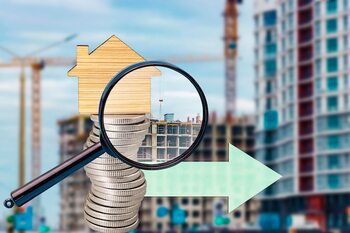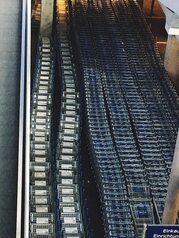The value of social connectivity in real estate appraisal

The value of social connectivity in real estate appraisal is a fundamental aspect that should not be overlooked when considering a property. In Costa Rica, where lifestyle intertwines with access to nearby services, location becomes a decisive factor for buyers and investors. Proximity to schools, hospitals, and recreational areas not only enhances quality of life but also elevates property values. This article will explore how these elements directly impact real estate appreciation.
The importance of nearby services in the purchasing decision.
The decision to purchase a property is strongly influenced by the availability of nearby services, as they provide convenience and facilitate daily life. For many buyers, proximity to schools, supermarkets, hospitals, and recreational areas is not just a luxury, but a necessity. Living in a place where these services can be easily accessed reduces commuting time and improves the quality of day-to-day life, making a property more appealing. Thus, having nearby services becomes a determining factor that directly impacts purchasing decisions.
Additionally, proximity to essential services not only benefits current residents but also plays a crucial role in the potential future value of a property. Investors and buyers often assess the location considering the infrastructure and resources available in the surrounding area. Areas with easy access to medical clinics, recognized schools, and recreational spaces tend to maintain or increase their value over time. Therefore, this aspect translates not only into immediate comfort for inhabitants but also into a solid investment for the future, thereby reinforcing the importance of nearby services in the real estate market.
2. How social connections influence the Costa Rican lifestyle.
Social connections in Costa Rica are an integral part of the lifestyle, as they foster a sense of community and belonging among the inhabitants. Daily interactions with neighbors, friends, and family create support networks that not only enrich the everyday experience but also contribute to emotional and social stability. This social fabric is strengthened in areas where homes are strategically located near parks, community centers, and other public spaces, facilitating informal encounters that nurture lasting relationships. Thus, properties located in environments that promote these connections tend to be more valued by buyers.
Moreover, access to essential services such as schools and hospitals is vital for the well-being of Costa Rican families. Proximity to these resources creates a conducive environment for forming meaningful connections among residents, who share common interests and actively participate in local activities. This interaction not only enhances the quality of life but also influences the perception of the neighborhood as a safe and attractive place to live. Therefore, by investing in properties within socially well-connected communities, buyers can be confident that their choice will not only improve their personal lifestyle but also ensure continuous appreciation of the property over time.
3. Analysis of the impact of public transport on real estate valuation.
Public transportation is an essential component of social connectivity that significantly influences real estate valuation. The availability of effective transportation systems, such as buses, trains, or trams, not only facilitates the daily commuting of residents but also expands their access to job opportunities and essential services. When a property is located near public transportation stations or stops, it becomes a more attractive option for potential buyers and tenants. This accessibility creates higher demand in the real estate market, which can in turn lead to a notable increase in property value.
Additionally, the quality and frequency of public transportation play a crucial role in this analysis. Areas well-connected with regular services tend to attract a more diverse and economically active population, fostering a vibrant and dynamic environment. Investment in transportation infrastructure is often accompanied by additional urban improvements, such as parks and commercial spaces, which further enrich the surroundings for residents. Therefore, properties located in areas with good connectivity not only enjoy sustained appreciation but also benefit from the continuous growth of the surrounding area.
4. The relationship between security and nearby services: a priority for buyers.
The relationship between safety and nearby services is a crucial aspect for those looking to acquire a property, as the perception of safety directly influences the purchasing decision. Buyers tend to be attracted to areas that not only provide access to essential services such as schools and hospitals but also ensure a safe environment. This connection between safety and accessibility becomes a determining factor; residents seek environments where they can enjoy their community without worries, which enhances their sense of well-being and satisfaction.
Additionally, the presence of nearby services helps to create a more cohesive and active community, which positively impacts the neighborhood's perception of safety. Areas with good social connectivity tend to have higher levels of community surveillance and civic engagement, which deters criminal activities. Therefore, when assessing property value, potential buyers consider not only the quality and variety of available services but also how these elements foster a safe and welcoming environment. Ultimately, this combination strengthens the property's appeal in the market, thereby increasing its long-term value.
5. What do buyers look for in terms of accessibility and community?
In the search for a new home, buyers increasingly prioritize accessibility and a sense of community. The ease of accessing essential services such as supermarkets, public transport, schools, and health centers has become a decisive criterion. Buyers want to minimize the time and effort they dedicate to daily activities, allowing them to enjoy a more balanced and less stressful life. Furthermore, when a property is located in a well-connected area, its value tends to increase, as the demand for these features remains high. On the other hand, the sense of community also plays a crucial role in the buying decision. People seek environments that foster social interaction and collective well-being. Neighborhoods with parks, recreational areas, and community events provide opportunities to establish interpersonal relationships and strengthen bonds among neighbors. This aspect not only enhances quality of life by offering spaces for social activities but also contributes to creating a safe and welcoming environment. Thus, properties located in active communities are seen as attractive investments due to their potential to maintain or increase their value over time.
6. Competitive advantages: neighborhoods with high social connectivity.
Social connectivity in neighborhoods not only translates to proximity to basic services but also fosters the creation of community networks. Residents living in areas with high social interaction tend to enjoy a more collaborative and safe environment. This social dynamic contributes to a sense of belonging, which can be a decisive factor for those looking to settle in a place. Communities with high connectivity often organize activities and events, reinforcing bonds among neighbors and improving overall quality of life. Thus, properties located in these areas are not only attractive for their infrastructure but also for the friendly and supportive atmosphere they provide.
Additionally, social connectivity positively impacts real estate value by attracting a variety of potential buyers. Young families seek neighborhoods where they can establish lasting relationships and where their children can grow in a safe and stimulating environment. On the other hand, investors view areas with high social activity favorably, as these can generate greater demand for rentals and sales. Consequently, properties in these neighborhoods tend to maintain or increase their value over time, becoming a solid investment for those who recognize the positive impact of living surrounded by an active and engaged community.
7. The role of infrastructure in increasing real estate value.
The role of infrastructure in increasing real estate value is a critical factor that cannot be ignored. Investments in infrastructure, such as roads, public transportation, and basic services like water and electricity, are essential for improving the connectivity of an area. These improvements not only facilitate the mobility of residents but also attract new businesses and services that enrich the community. When a property is well-connected through efficient infrastructure, its appeal increases significantly, which in turn elevates its market value.
Additionally, the quality of infrastructure can influence purchasing and investment decisions. An area with access to good communication routes and public transport tends to be more desirable for families and professionals seeking comfort and efficiency in their daily commutes. This generates higher demand for properties in those areas, leading to an increase in prices. Similarly, the development of parks, shopping centers, and other recreational spaces within a well-planned urban environment can transform a previously undervalued neighborhood into a highly valued place. In this way, infrastructure acts as a catalyst for local economic growth and directly contributes to the increase in real estate value.
8. Case study: areas that have increased their value due to nearby services.
A clear example of how social connectivity can influence real estate added value is observed in areas that have experienced notable development due to the proximity of essential services. Neighborhoods that were previously considered peripheral have seen a significant increase in their value due to the opening of new schools, hospitals, and shopping centers. The arrival of these infrastructures not only attracts more residents but also improves the perception of the area as an ideal place to live, which in turn raises property prices. In this sense, the case of communities around technology parks or universities is particularly representative, as they tend to experience a surge in demand and real estate valuation.
Another relevant case can be found in areas where efficient public transport projects have been implemented. Previously marginalized areas due to difficult access have seen a dramatic increase in their value after the installation of bus routes or urban train lines. This type of social connectivity not only facilitates daily commuting for residents but also generates interest among new buyers and investors. Observing these phenomena, it becomes clear that access to nearby services and good transport infrastructure are determining factors that can radically transform the real estate landscape and contribute to the sustainable growth of entire communities.
9. Current trends in real estate search with social connectivity.
The search for real estate today is deeply influenced by social connectivity, a phenomenon that reflects people's desire to integrate into dynamic and accessible communities. Buyers are not only looking for a house but an environment that offers them the opportunity to interact with their neighborhood and enjoy essential services within walking distance. This shift in mentality has led real estate developers to prioritize projects strategically located near schools, shopping centers, parks, and recreational areas, which translates into a significant increase in property values.
Additionally, social connectivity is not limited solely to physical proximity to services. It also involves access to efficient transportation networks and sustainable mobility options that facilitate daily life. Increasingly, buyers value communities that promote the use of public transportation and infrastructure for bicycles and pedestrians. This focus on sustainability and an active social life not only enhances the quality of life for residents but is also considered a key indicator for investors when assessing the potential for property appreciation. In this context, it is clear that social connectivity has become an essential element within the current real estate landscape.
10. Future projections: where is the Costa Rican real estate market headed?
The Costa Rican real estate market is in a phase of constant evolution, driven by a growing demand for properties that offer not only a home but also a connected lifestyle. As more people seek to settle in areas that promote social interaction and access to essential services, urban developments are likely to focus on locations that encourage this connectivity. This could translate into an increase in the construction of residential projects near schools, shopping centers, and recreational spaces, which will not only benefit current residents but also attract new buyers and investors interested in capitalizing on this trend. On the other hand, sustainability and social well-being are beginning to play a crucial role in purchasing decisions. Future real estate developments are likely to integrate eco-friendly and community-oriented features to meet the expectations of an increasingly conscious audience. This could include everything from accessible green spaces to affordable housing initiatives that prioritize social inclusion. In this context, those places that manage to combine social connectivity with sustainable practices will position themselves as leaders in the Costa Rican real estate market, elevating their value and appeal for both local and international buyers.



